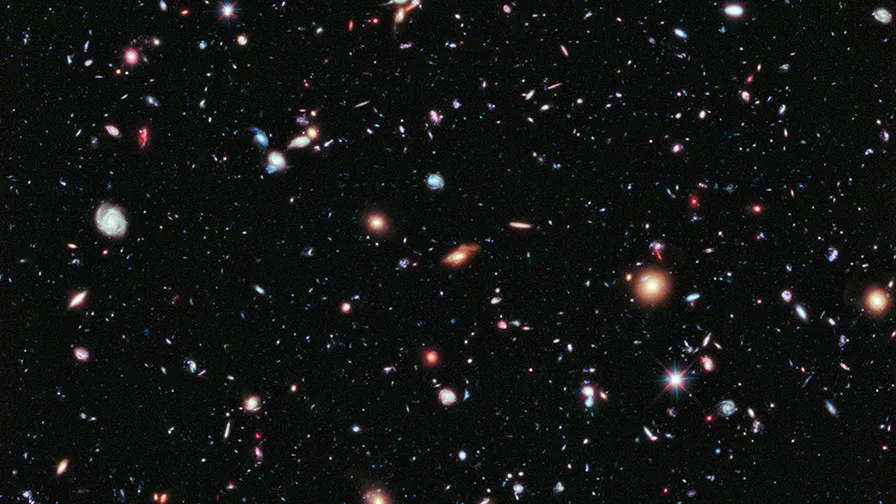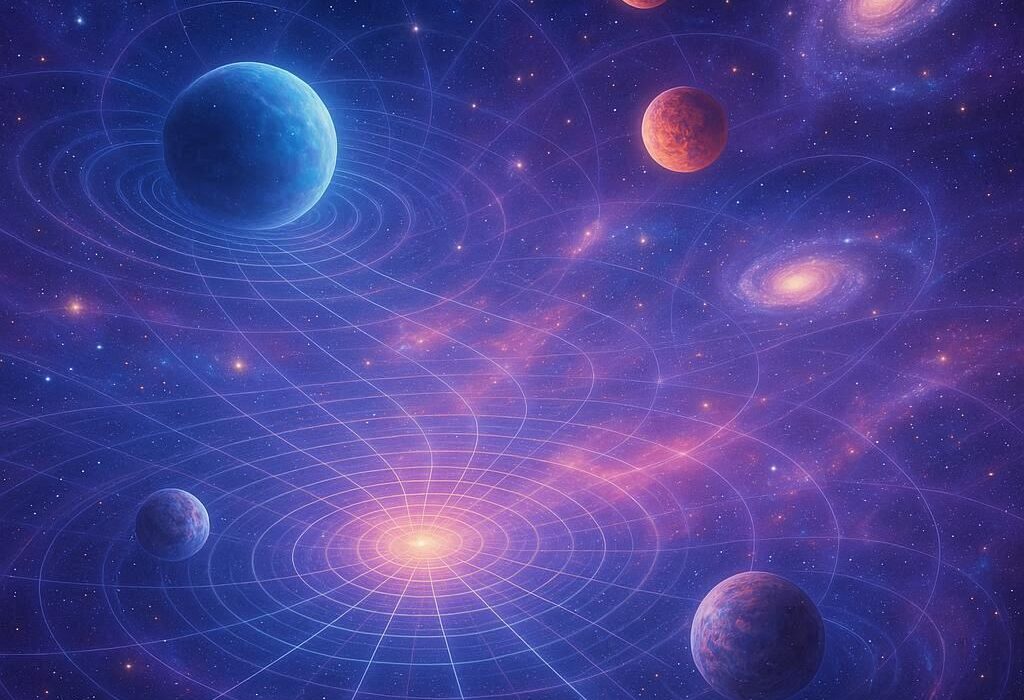Since the dawn of human awareness, we have gazed at the night sky with awe and wonder. Ancient people built myths of gods and monsters dwelling in the heavens. Philosophers pondered whether the cosmos had boundaries or stretched into infinity. Poets spoke of eternity as a mysterious ocean without shores. And today, despite all the power of modern science, the question remains: what lies beyond the edge of the universe?
This question is not just scientific; it is profoundly human. It is born from the same longing that made children ask what lies beyond the horizon, what lies across the sea, what lies past the stars. Our universe, vast and ancient, still feels to us like a frontier with edges hidden by darkness. The search for those edges is as much about understanding ourselves as it is about understanding space.
To explore this question, we must journey through what we know about the universe, what science suggests might exist beyond our cosmic horizon, and what mysteries may forever remain unreachable. The answer, or perhaps the inability to find one, may hold the deepest truths about reality itself.
The Known Universe
Before we can imagine what lies beyond, we must first understand the boundaries of what we can see. The universe as we observe it is not infinite from our perspective—it has an edge. But this edge is not like the wall of a room or the end of a road. It is instead the limit of visibility, set by the speed of light and the age of the cosmos.
The universe is approximately 13.8 billion years old. Light travels at a finite speed, about 300,000 kilometers per second. This means we can only see light that has had enough time to reach us since the birth of the universe. The farthest light we can detect comes from about 13.8 billion years ago, from the so-called cosmic microwave background—the faint afterglow of the Big Bang.
Yet because the universe has been expanding during that time, the true size of the observable universe is much larger. Objects whose light we are only now seeing are now about 46 billion light-years away. In every direction, we peer into this vast cosmic sphere, a bubble of visibility around Earth. Beyond that horizon, there may be more galaxies, more matter, perhaps even other structures—but we cannot see them.
Thus, the “edge of the universe” is really the edge of the observable universe. It is not a physical wall, but a horizon beyond which information has not yet reached us. It is like standing on the shore of an infinite ocean: you see as far as the curve of Earth allows, but the water extends beyond your sight.
This brings us to the heart of the mystery: if the observable universe is only a small patch of reality, what lies beyond it? Is there more of the same, or something entirely different?
Expanding Frontiers
To approach this question, we must understand that the universe is not static. It is expanding. Since Edwin Hubble’s discoveries in the 1920s, we have known that galaxies are rushing away from one another, carried by the stretching fabric of space. The farther a galaxy is, the faster it recedes.
This expansion means that the observable universe is constantly changing. New regions of space drift beyond our reach as their light can no longer outrun the accelerating expansion. The cosmos is not just vast—it is actively growing, a dynamic frontier forever receding.
In practical terms, this means that the edge of what we can see is not the edge of all existence. There may be galaxies unimaginably far away, beyond even the reach of light, hidden forever by the expansion of space. In fact, most of the universe is already lost to us in this way. The cosmos is larger than our horizon, perhaps infinitely so.
So when we ask what lies beyond the edge, one possibility is simply: more universe. More galaxies, more stars, more cosmic web. Perhaps endless repetition, stretching without end, like an infinite tapestry. Yet the human mind struggles to grasp infinity. And some theories suggest the answer may be even stranger than mere endlessness.
Infinite or Finite?
Is the universe infinite? Or does it have boundaries? This is one of the deepest unsolved questions in cosmology.
An infinite universe would mean that beyond our observable sphere lies an endless continuation—more galaxies and clusters repeating forever. Somewhere, far beyond any distance we can measure, another region of space might exist almost identical to ours, with stars arranged in similar patterns. Some physicists even suggest that if space is truly infinite, then every possible configuration of matter must exist somewhere, including exact copies of you reading these words.
On the other hand, the universe may be finite but unbounded. This is a concept famously illustrated by Einstein. Imagine the surface of a sphere. From your perspective, it has no edge—you can walk around forever without falling off. Yet the surface area is finite. Likewise, space might be curved back upon itself in higher dimensions, meaning that if you traveled far enough in one direction, you could eventually return to your starting point.
This raises an astonishing possibility: beyond the edge we see lies… ourselves, repeated from another angle, because the universe loops back on itself. But the scales are so immense that such looping is beyond any human reach.
The Multiverse Hypothesis
Beyond the questions of finite or infinite space lies an even bolder idea: that our universe is not alone.
The multiverse hypothesis suggests that our universe is just one bubble in a vast cosmic foam of universes. These other universes might be completely disconnected from ours, or they might exist beyond the edge of what we see, expanding in parallel.
Some versions of inflationary cosmology—the theory that the universe underwent rapid exponential expansion just after the Big Bang—predict that inflation never ended everywhere. In some regions, space kept expanding, birthing new universes endlessly. If true, our observable universe is just a small pocket within a much larger multiverse.
What lies beyond our cosmic edge, then, may not just be more space like ours, but entirely separate realities with different physical laws, different particles, perhaps even different dimensions of time and space. In some universes, stars may never form. In others, life may flourish under different physics. The multiverse, if it exists, is not just bigger than our universe—it is bigger than our imagination.
The Cosmic Horizon and the Limits of Knowledge
Yet there is a humbling truth: we may never know for certain what lies beyond. The cosmic horizon is absolute. Light from beyond cannot reach us; information is trapped forever outside. No telescope, no technology, no scientific method can pierce this boundary. It is not just a practical limitation, but a fundamental one, written into the laws of physics.
This realization carries both frustration and wonder. Frustration, because we long to see further, to answer definitively. Wonder, because it reminds us that mystery is not an error in science but part of its fabric. The universe is not a puzzle with all the pieces available. It is a horizon that recedes as we approach, a mystery that grows deeper as we learn more.
Perhaps the ultimate lesson is that beyond the edge lies not an answer but a question—a question that fuels imagination, philosophy, art, and the human spirit itself.
Beyond Time Itself
Some physicists suggest that asking what lies beyond the universe is like asking what lies north of the North Pole. It is a question that assumes a boundary where none exists. In this view, the universe is all of space and time; there is no “outside.”
Yet our minds resist this. We instinctively imagine boundaries and outsides, edges and beyonds. Could it be that beyond the universe lies something not of space, not of time, but of a different order entirely? A realm we cannot conceive, just as fish cannot imagine dry land?
This leads to profound intersections with philosophy and even spirituality. Some traditions have long imagined that beyond the visible cosmos lies another reality, whether divine, metaphysical, or transcendent. Science does not confirm such visions, but neither does it erase the sense that our universe may be part of something greater.
The Human Edge
In the end, to ask what lies beyond the universe is also to ask about ourselves. Why do we seek the edges? Why are we not content with what is visible?
The answer may be that curiosity is woven into our nature. Just as our ancestors looked beyond mountains and seas, we now look beyond galaxies and cosmic horizons. The drive to know, to imagine, to wonder, is as infinite as the universe itself.
Einstein once remarked that the most incomprehensible thing about the universe is that it is comprehensible. And yet, beyond comprehension lies mystery, a reminder that we are part of something larger than ourselves.
The edge of the universe, whether infinite continuation, looping space, multiverse, or unknowable horizon, is ultimately a mirror. It reflects our longing for meaning, our hunger for discovery, and our humility before the vastness of existence.
A Universe Without an End
What lies beyond the edge of the universe? Perhaps more stars, more galaxies, more endlessness. Perhaps entirely new realms beyond our physics. Perhaps nothing at all, only the end of space and time.
Science offers possibilities but not certainties. Yet in the asking, we glimpse something profound: the universe is not merely a place we inhabit, but a mystery that inhabits us. To wonder what lies beyond is to participate in that mystery.
In the silence of the night sky, we look outward and inward at once. The stars whisper of infinities we cannot see. The horizon reminds us that truth is always partly hidden. And somewhere beyond our reach, beyond the edge of light, beyond the final curve of space, lies the greatest mystery of all: existence itself.






